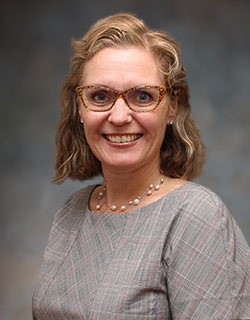Sarcoidosis: What you should know about this young person’s disease
January 13, 2017
Imagine a disease that can strike any joint or organ at any time, with no known cause or cure. Sarcoidosis is just that — an elusive disease that is seldom fatal, sometimes painful, sometimes not. It may plague an individual throughout his or her lifetime, or strike once and never return. Treatment might be effective, or it might not.
“We call it ‘The Great Mimicker’ because it is often misdiagnosed,” says Elisabeth Carr, M.D., a sarcoidosis specialist who works in pulmonary and critical care medicine at Greater Baltimore Medical Center.
Sarcoids are tiny, grain-like clusters of inflamed cells called granulomas that form in various organs throughout the body. Over time, they can grow into masses that damage organs. They are most commonly found in the lungs and lymph nodes, but can also show up in the brain, eyes, kidneys, liver, nervous system and skin, and elsewhere. They are thought to develop as an immune system response.
According to the National Institutes of Health’s National Heart, Lung, and Blood Institute, African-American women ages 20-40 seem to be most at risk, but anyone is vulnerable. Some studies link sarcoidosis to chemical exposure, but the cause is uncertain.
“I use the analogy of the pearl and the grain of sand, but we don’t know what the grain of sand is,” Dr. Carr says.
If you’ve never heard of sarcoidosis, you’re not alone. Researchers don’t really know how widespread it is because some people might be unaware they have it. The disease can be difficult to diagnose since not all physicians are well educated about it. For example, if a patient complains of ankle pain, sarcoidosis is probably not the first thing a physician considers. The only way to diagnose it for sure is to examine a tissue sample under a microscope.
The Life and Breath Foundation aims to empower newly diagnosed sarcoidosis patients to get the coordinated care they need and learn more about their complex condition. Sean Hull, who lost his mother to complications from sarcoidosis when she was only 59, started the foundation.
Dr. Mark Lamos, past president and medical director of Greater Baltimore Medical Associates (GBMA), has been working with the foundation to build awareness in the medical community of how to combat the disease and help doctors coordinate and provide patient-centered evidence-based care.
“Patients often receive non-comprehensive care because the records are not kept in one system — information is not shared well among caregivers,” Dr. Lamos says. “For example, you could have sarcoid of the lungs, and you may get sent to a pulmonary specialist, but if somebody forgot to send you to an eye doctor, you could have undiagnosed iritis, which is inflammation of the eye.”
Lamos has seen hundreds of sarcoidosis patients over three decades of medical practice, so he knows how important it is for doctors to ask a lot of questions to diagnose and determine the extent of the disease.
Patients are encouraged to seek an experienced medical center, such as GBMC, with doctors who specialize in sarcoidosis.
Dr. Carr says there are treatments for sarcoidosis, but what works for one person might not work for another.
“Steroids are the first-line treatment if the sarcoid is in a high-value location like the lung, brain, eye, or heart,” she says. “There are a couple of other options for cardiac sarcoid. After steroids, we have immunomodulators like methotrexate. They can be added to the steroids or used afterward. Injections of immunosuppressors such as TNF inhibitors would be the next treatment.”
“All these medications have risks and side effects,” Dr. Carr adds. “I engage my patients in the decision-making process. Every sarcoidosis patient is different.”
Though scientists are researching sarcoidosis, there is still much to learn, doctors say. For example, there is still a question about whether sarcoidosis is hereditary.
“There are ‘flavors’ that are genetic, but it is not 100 percent across the board,” Dr. Carr says. “There is definitely a genetic component. It is an area of great interest in the scientific community.”
“I think what will happen over time is that we will find different phenotypes of it, just like we know that you can have three different types of lung cancer,” Dr. Carr says.
That will be one step closer to a cure.
- Lisa Jevens for Greater Baltimore Medical Center




